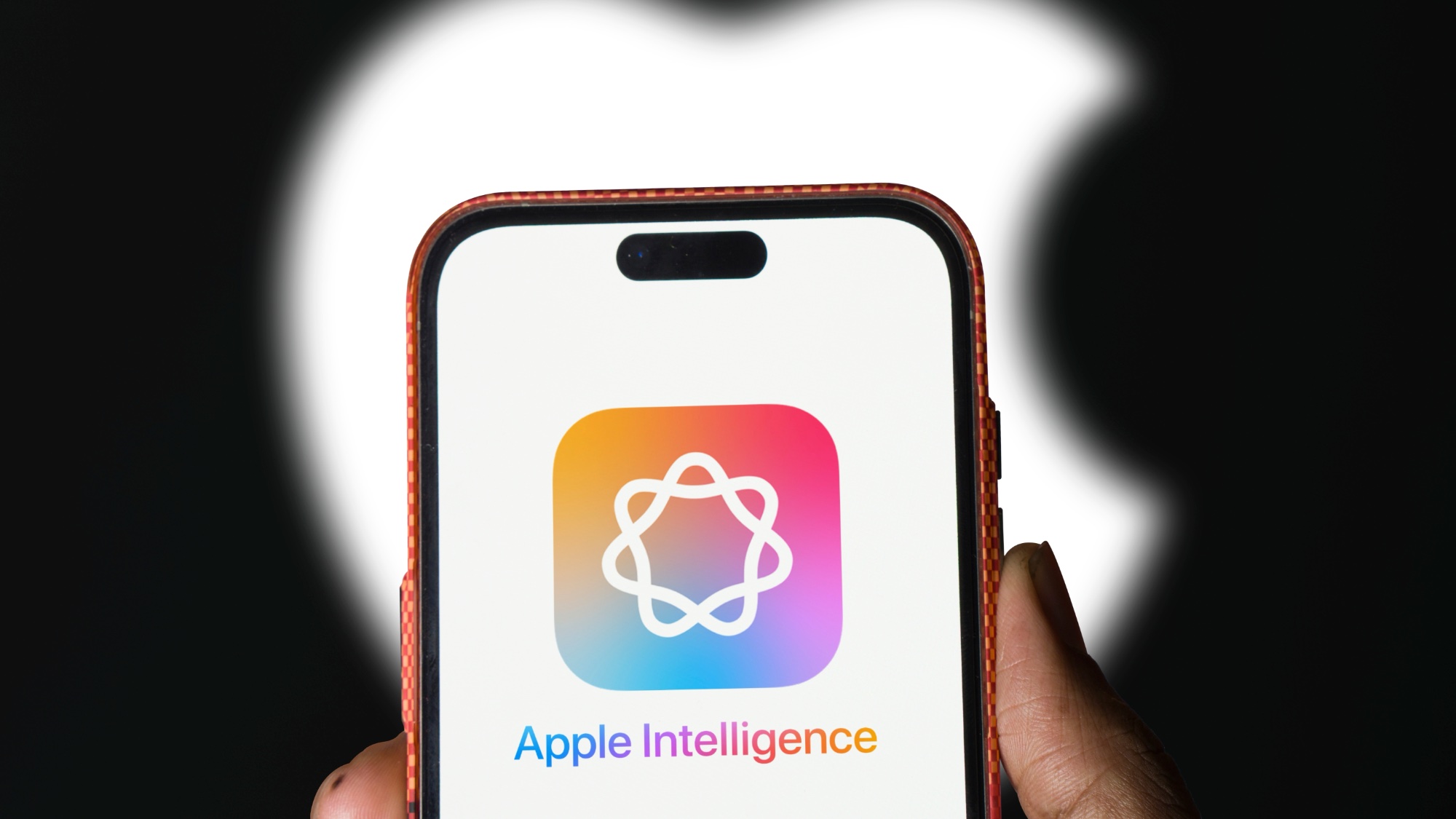
If the Samsung Galaxy Z Fold 3 shifts to a new technology, then the mildly annoying display crease that’s present on even the best foldables will become less apparent.
That’s according to OTI Lumionics, an advanced OLED materials and research firm that has specialist knowledge when it comes to displays, folding or otherwise. The firm told Tom’s Guide that foldable phones like the Galaxy Z Fold 3 are likely to see a less noticeable crease in folding screens, along with other technological improvements, thanks to advancements in display materials and manufacturing.
- Samsung Galaxy Z Fold 3 vs. Galaxy S21 Ultra: Which is best?
- Samsung Galaxy Z Fold 3 and Z Flip 3 leakers just tipped full specs and prices
- Plus: Google Pixel 5a leaker just tipped release date, price and full specs
Alongside the reduced crease, OTI Lumionics’ market research, along with reports by Display Supply Chain Consultants (DSCC), have the Galaxy Z Fold 3 tipped to get a more responsive touch screen and an impressive under-display camera.
As OTI Lumionics has developed a new filter technology that’s currently within the OLED supply chain, it's is confident in the Galaxy Z Fold 3 claims. However, the firm couldn't confirm if its technology was being used in the upcoming Samsung foldable phones, but a representative did say that it “provides material for research purposes to a number of OLED panel makers and smartphone OEMs.”
But if this technology is adopted by Samsung and other smartphone makers, then we could see the Galaxy Z Fold 3 spearhead an evolution in foldabe phones.
Here's how Samsung Galaxy Z Fold 3 could reduce foldable display creases

According to OTI Lumionics and DSCC, the Galaxy Z fold 3 will forgo the circular polarizer found on pretty much every smartphone and adopt a much thinner "color filter on encapsulation" (CoE) technology.
That's all very technical so let's break it down. Most, if not all, phones ship with a circular polarizer within the display stack (the layers that make up a screen). It’s a material that helps reduce reflections in bright light, improving visibility in sunlight.
Sign up to get the BEST of Tom's Guide direct to your inbox.
Get instant access to breaking news, the hottest reviews, great deals and helpful tips.
The problem is that a circular polarizer can be 81 microns thick, almost that of a sheet of paper. That might not seem like a lot, but all these layers add up and a thicker display stack can lead to a bulkier phone. The current Samsung Galaxy Z Fold 2 is hardly a slim phone, so it's logical that Samsung might want to find slimmer materials wherever necessary.
So both OTI Lumionics and DSCC believe that Samsung will go for a CoE material rather than a circular polarizer for the neutralization of incoming light and reduce the thickness of the display stack.
“By jumping into this new technology called color filter on encapsulation, what they can allow for is basically have more space now for other stuff to do,” said Jacky Qiu, vice president of OTI Lumionics.
And Qiu noted that the use of thinner materials would allow Samsung to then use thicker foldable glass for the Galaxy Z Fold 3's display. And as a result it would be less prone to visible creasing.
Korean website The Elec has also reported that Samsung could use this new color filter material. And a recent report by Ross Young, co-founder and CEO of Display Supply Chain Consultants in Austin, effectively corroborated previous reports and Qiu's claims.
However, Young doesn't believe Samsung will use thicker glass to reduce display creases or that the display stack will be thinner than before. Rather, Young claims Samsung will incorporate a carbon reinforced polymer layer under the Galaxy Z Fold 3 panel, with the same glass used by its predecessor.
“The Z Fold 3 incorporates a carbon reinforced polymer layer to increase strength below the panel,” Young told Tom’s Guide. “The display film stack on the Z Fold 3 is nearly 40% thicker than the Z Fold 2 despite the removal of the circular polarizer due to the addition of the relatively thick digitizer. It includes a shatterproof/protection layer under the UTG previously seen in the Z Flip 5G.”
So even if thicker glass isn't used and the display stack remains thicker, the Galaxy Z Fold 3's screen is still tipped to be more crease-resistant thanks to the reinforcement. And if this tech filters down the supply chain to other phone makers, we could see stronger and more resilient foldable phone displays in the near future.
Can the Galaxy Fold 3's rumored under-display camera compare to punch hole cameras?

Samsung's flagship phones have long been contenders in our best camera phones list, especially with the Galaxy S21 Ultra. But evolution of the selfie camera is the next phone frontier, notably with the idea of putting it under the display to avoid the use of distracting punch-hole cut-outs or notches.
The Galaxy Z Fold 3 is tipped to get such a camera, and Qiu told us it could be the best one yet. And that'll be down to the CoE technology.
With early-generation under-display cameras, there was only about 20 to 22% transparency according to Qiu, which doesn't allow for great front-facing photos. We've seen this happen in the ZTE Axon 20 5G one of the first phones to ship with an under-display camera.
But while display layers are expected to sit between the Galaxy Z Fold 3's rumored selfie camera and the top glass surface, Qiu reckons the use of a CoE material filter will allow a lot more light to move through the display. And more light meant better photos.
"So if you get that 50 to 100% improvement, you might get to 30% overall stack transparency," said Qiu. "It's still less than half as transparent as before, but it can, with more powerful backend algorithms, cameras, you can get everything up to par."
Young notes that while not fully transparent like a hole punch the increased transmissivity could see the Galaxy Z Fold 3's under-display camera deliver notable improvements over the ZTE Axon 20's camera.
Furthermore, Young says Samsung's computational photography could help iron out some odd quirks with CoE, such as the “yellowing polyimide substrate" (the ZTE Axon 20 has a clear glass substrate), which could make selfies look yellowish before algorithms tweak the photo.
In the future, Samsung may be able to use a colorless polyimide instead, but current temperature requirements prevent it from being used as a flexible substrate.
There's another advantage to using a proper under-display camera in that it can make a foldable phone more durable. According to Qiu, by pushing the camera underneath the display, it should help eliminate a potential weak point caused by laser-cutting a hole on the front panel assembly.
"Instead of digging a hole, you can basically use something that is existing, and you just basically stick on the camera behind the display [it] can also improve the structural integrity," said Qiu.
Galaxy Z Fold 3 improved touch and S Pen support

A change in display tech has also been tipped to make the Galaxy Fold 3's screen more responsive to touch and have S Pen compatibility; the latter we've already seen in the rumor mill.
According to a presentation by Young at the SID 2021 Business Conference, the Galaxy Z Fold 3 could do this by using active electrostatic digitizer technology instead of electro-magnetic resonance for S Pen touch functionality.
As a result, touch response will be improved over the Galaxy Z Fold 2. And that will be handy as foldables use softer glass than that found in standard smartphones, meaning there's more give in the display that could make them less responsive when using a stylus. But if the Galaxy Fold 3 tackles, this it could lead the way for other foldables to follow suit.
The future of foldable phone prices and ubiquity

While the Samsung Galaxy Z Fold 3 is looking like the foldable phone to watch, Young recently tweeted that Google, Oppo, Vivo and Xiaomi had purchased LTPO 120Hz UTG panels for foldables launching in Q4 of 2021.
Even with more companies getting involved with the space, foldables are still out of reach for many buyers due to the high cost associated. The Galaxy Z Fold 2 launched at $2,000 for example. And with the new tech Samsung's next foldable phone is tipped to have, it could be a while before the advancements filter down to future affordable foldables.
But as manufacturing gets better with increased foldable production, prices should follow. Sri Peruvemba, CEO at display firm Marketer International, predicts foldables like the Z Fold 3 could fall below the $1,000 mark in the next three years.
Already, rumors are pointing to the Galaxy Z Flip 3 creeping closer to that $1,000 price point. While a rumored $1,249 isn't cheap, it's better than the Galaxy Z Flip 5G's original $1,449 price.
"What I'm really excited about is if they can start bringing the Fold series outside of their home market in South Korea and be able to see it around town here..." said Qiu. "Because this is definitely a tremendous device that is a head turner."
Imad is currently Senior Google and Internet Culture reporter for CNET, but until recently was News Editor at Tom's Guide. Hailing from Texas, Imad started his journalism career in 2013 and has amassed bylines with the New York Times, the Washington Post, ESPN, Wired and Men's Health Magazine, among others. Outside of work, you can find him sitting blankly in front of a Word document trying desperately to write the first pages of a new book.

